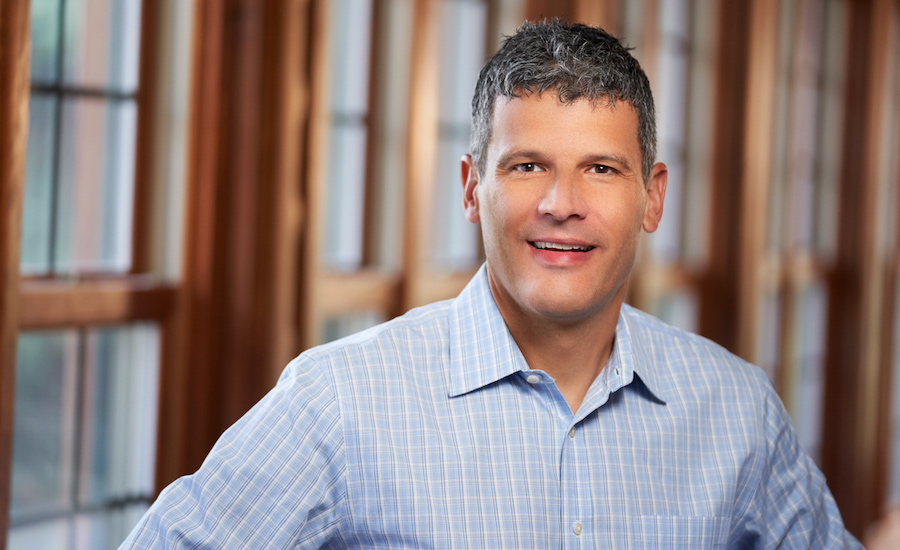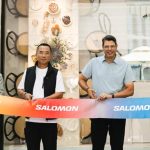By Eric Smith
<span style="color: #999999;">When Greg Williamson was appointed president of CamelBak Products LLC in July 2018, he became the hydration pack and water bottle brand’s fifth president in four years.
And his arrival came just a few months after REI had dropped CamelBak because its parent company, Vista Outdoor Inc., owned Savage Arms and the retailer had decided, following the Parkland, FL, school shootings, to boycott any brand related to firearms. That included CamelBak and some other Vista holdings.
To suggest Williamson was charged with bringing some stability to the brand would be an understatement. So for the past 15 months, Williamson—who joined Petaluma, CA-based CamelBak most recently from marketing gigs at a motorcycle rental company and snowmobile manufacturer—has been working toward that end.
His initial goal was simple: start with the basics and steady the ship.
“When I came in and took a look at the business, I realized that we needed a strategic plan, we needed a path for growth, we needed some fundamentals in place that were going to help us prioritize resources, make decisions, and allocate people’s time and efforts so we’re all aligned,” Williamson told SGB in a recent wide-ranging interview. “It’s not that those things weren’t in place, but it’s tough to build any sort of cultural momentum when there’s so much change.”
Despite all that change—CamelBak onboarding yet another president and not having wall space at prominent outdoor retailer and longtime channel partner REI—the brand never wavered in its mission of innovating hydration technologies and launching new products. Carrying on that 30-year tradition proved to an all-important constant for both the brand and its newly appointed president.
Under Williamson’s leadership, the brand’s fortunes began changing. When Vista divested its firearms holding, REI welcomed CamelBak back into its stores, as SGB first reported during our coverage of Vista’s recent Investor Day. And now Williamson and his team are feeling a renewed sense of momentum along this journey.
“It has been tremendously rewarding,” said Williamson, who never balked at facing adversity along the way. “The professional opportunity to come in and lead a business and a brand that has such a heritage and legacy in a cool space, and combining those things with some personal interests around outdoors and specifically biking and running, was too good to pass up.”
SGB spoke with Williamson, lead photo, at length about what’s been happening at CamelBak during his now 15-month tenure, including the return to REI, how its channel strategy changed, additions to the C-suite and what’s on the horizon for this OG brand. Here’s what he shared.
How important was getting back into REI for a core outdoor brand like CamelBak in terms of customer perception as well as revenue growth? It was very important financially, of course. But also, REI is such a destination for our core consumer, not only to purchase products but to seek out information expertise from their associates. They hold such a high standard in the marketplace, and there’s a halo effect of having your brand in their stores for awareness and consumer education. When we lost our listings there, the impact of not having a presence was hard to measure, but we knew it existed. To be able to earn our way back in is important for that reason alone, just to have that presence in one of the leading retailers in the space. The other big benefit is just a morale boost to the CamelBak business and team members. The team is very excited about having the opportunity to earn some of that business back and to work with them again.
Where does the CamelBak brand image now stand in the outdoor and retail space? We measure that in a couple of different ways. The most obvious is the feedback you get in visits and meetings, from line reviews and at trade shows. For me, the leading edge of that pathway is delivering products that are on-trend, that are solving consumers’ problems and that have good commercialization plans. We’ve always had good channel relationships, but we’re truly partnering with our key customers to understand where our brand fits, where our products fit, how we can grow our businesses in a way that’s mutually beneficial for both. That, along with the product pieces, is how you earn and maintain credibility. I don’t know if we’ve ever lost it, but we certainly feel like there are always opportunities to improve it through improved account management and more collaboration.
In what ways has CamelBak adjusted its channel strategy in the past year, and do the changes made, coupled with REI bringing the brand back in, now put the brand in an even stronger position? We’re stronger with REI as part of our customer base, for sure. That’s probably stating the obvious. As far as channel strategy, what we’ve done in the past year is not necessarily said, “Hey, we’re going to shift our focus from channel A to channel B,” but we reinforced the importance of having good channel partner relationships and understanding what that means. We wanted to know where we stand with our best customers and biggest customers relative to the success of our products. So we looked closely at things like sell-through, margin, inventory positions. We’ve truly thought about those relationships in a 360-degree manner. It’s more than just making a sales call; it’s planning a business together.
Over the last year, was there more of an emphasis on direct, and is there an overall shift in the wholesale/direct balance at CamelBak? We want to make sure our products are for sale wherever the consumer wants to shop. Is that trending more toward digital platforms? For sure. That doesn’t necessarily mean direct with CamelBak.com, though the products are available there. It means digital platforms, whether it’s ours or our channel partners. So we have definitely shifted some of our efforts, particularly our marketing efforts, toward enabling those digital platforms, including making sure our website has good content as a destination for a consumer. But we also are beginning to do a better job of working with the digital arms of our brick-and-mortar partners. That trend’s not going to slow down anytime soon. We’re continuing to think about all things digital so the consumer can access the products online, wherever they want.
What is driving growth for CamelBak right now and where are the most lucrative opportunities looking ahead? We like all of our categories, but in running, our share is less, so there’s a little more white space. We definitely see growth in our pack business, particularly in multiuse packs. Consumers want flexibility in our products because their lives are very fluid. They are moving from work to family to recreation to time with friends, so they’re shifting toward products that can migrate throughout their day. And on the bottle side, no surprise, we’re seeing nice growth in our stainless business as consumer trends continue to shift that way. We have a lot of upside there given our relative share position versus our competition.
You said that by the end of 2021, roughly 65 percent of CamelBak’s revenue will be from new products; what’s driving this refresh and how important is it for the brand to be both customer- and innovation-driven? It starts with the philosophy that CamelBak has to be product-centric. That’s the growth engine of most consumer product businesses and we’re no different. The trick then is how do you deploy that across your organization? And how do you measure it? The concept of new-product vitality index—which measures current-year sales driven by new product launch in the previous three years—is one way to do that, so we’re starting to install that metric as a way to measure ourselves. New products give you such an opportunity to not only grow sales but tell a story about your brand. And frankly, in the space we’re in, where we have strong competitors, sophisticated customer and, in most cases, informed consumers, the demand for new products and relevant new products is high. If you don’t lean into that and have a plan to address that, you’ll fall behind very quickly.
There have been some management changes at CamelBak in addition to you; in what ways has new leadership invigorated the brand? The nice thing about being able to build a team and bring in folks is it brings in a fresh level of thinking. Given where we are as a business and the opportunity we see ahead of us, which is all very positive, having new ideas is great. But what’s as important, or even more important, is just bringing in a new perspective on what success looks like. When it’s all in sync and working well together, it can be powerful. We’ve made a lot of changes, and but it’s been rewarding so far.
You report to a public company that measures top- and bottom-line growth, but how do you measure success for CamelBak and yourself as president? No doubt there’s a financial component to the success metrics. Certainly, top-line growth and profitability are key to that. I look at top-line growth as the ultimate validator that the things you’re doing are resonating in the marketplace and consumers are accepting your products. If your new products are being accepted in the marketplace, you’re doing the right things. Also, getting your followers engaged with your brand is a great way to measure success. The more engaged our consumers are, the more our messages are hitting the target and the more the brand is resonating. It’s also important that our associates understand and buy into our message.
What else should our readers know about CamelBak? This is a brand that essentially created a product category 30 years ago, and has an extremely proud history and heritage. We have sold millions of units, whether it’s packs or bottles, in those 30 years, and to have that presence in the marketplace is extremely powerful. For me, personally, it’s extremely fortunate to be able to lead a business like that. We don’t have all the answers just yet, but we’re starting down that path. And we’re starting from a good spot with a great brand, loyal consumers and strong channel partners. Now the question is how do we leverage all those things and think about the next 30 years?
Photo courtesy CamelBak
















